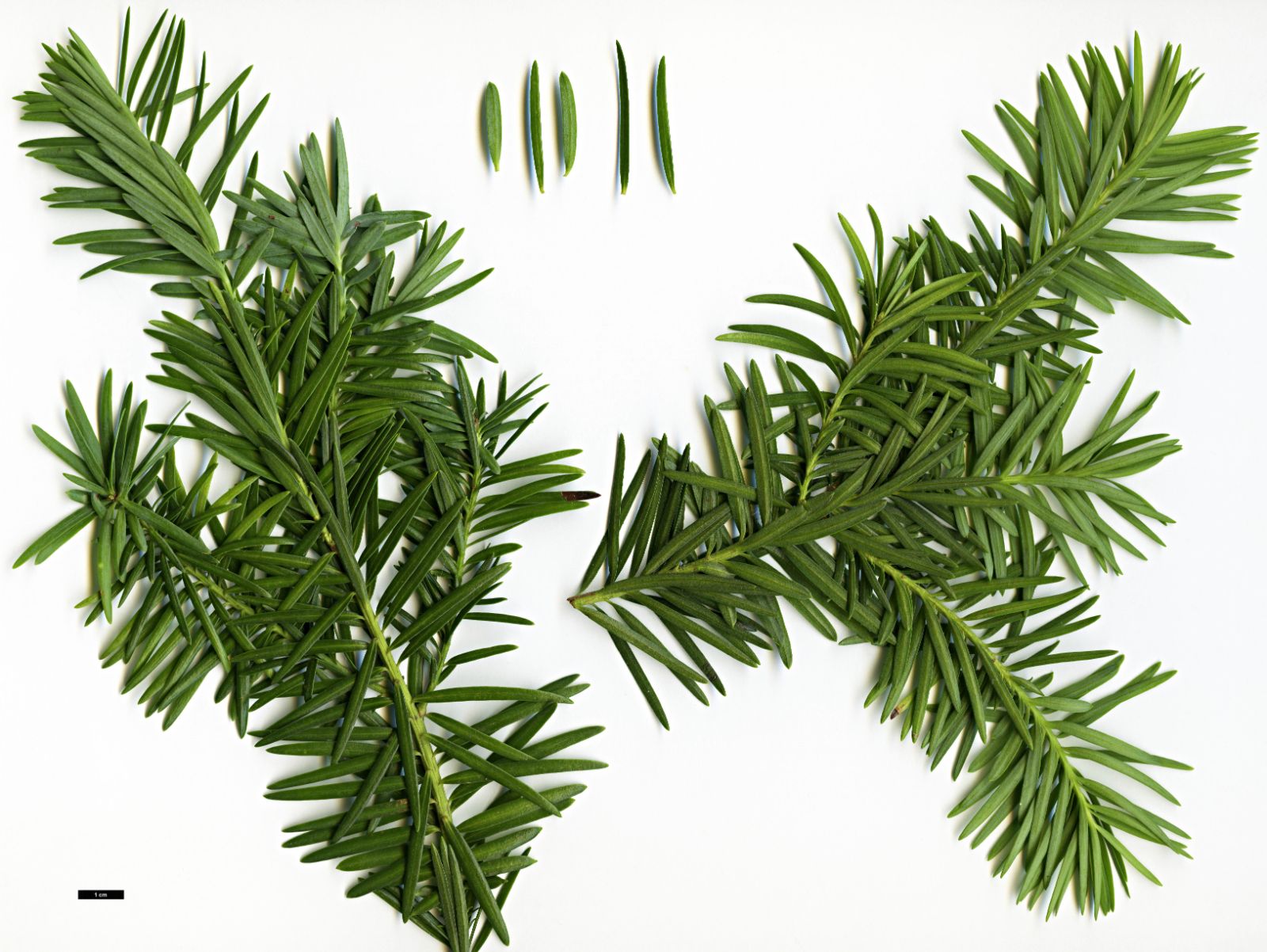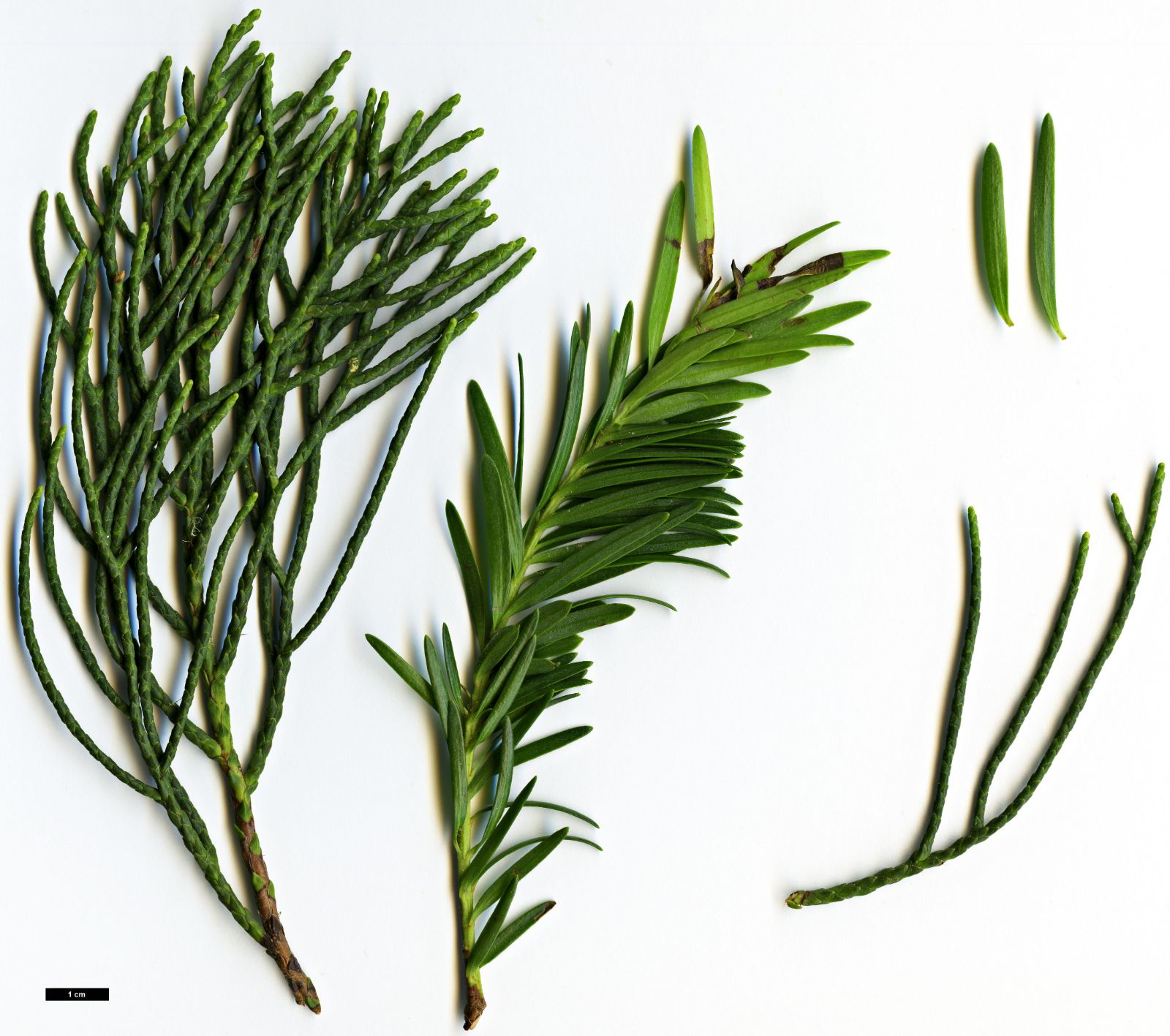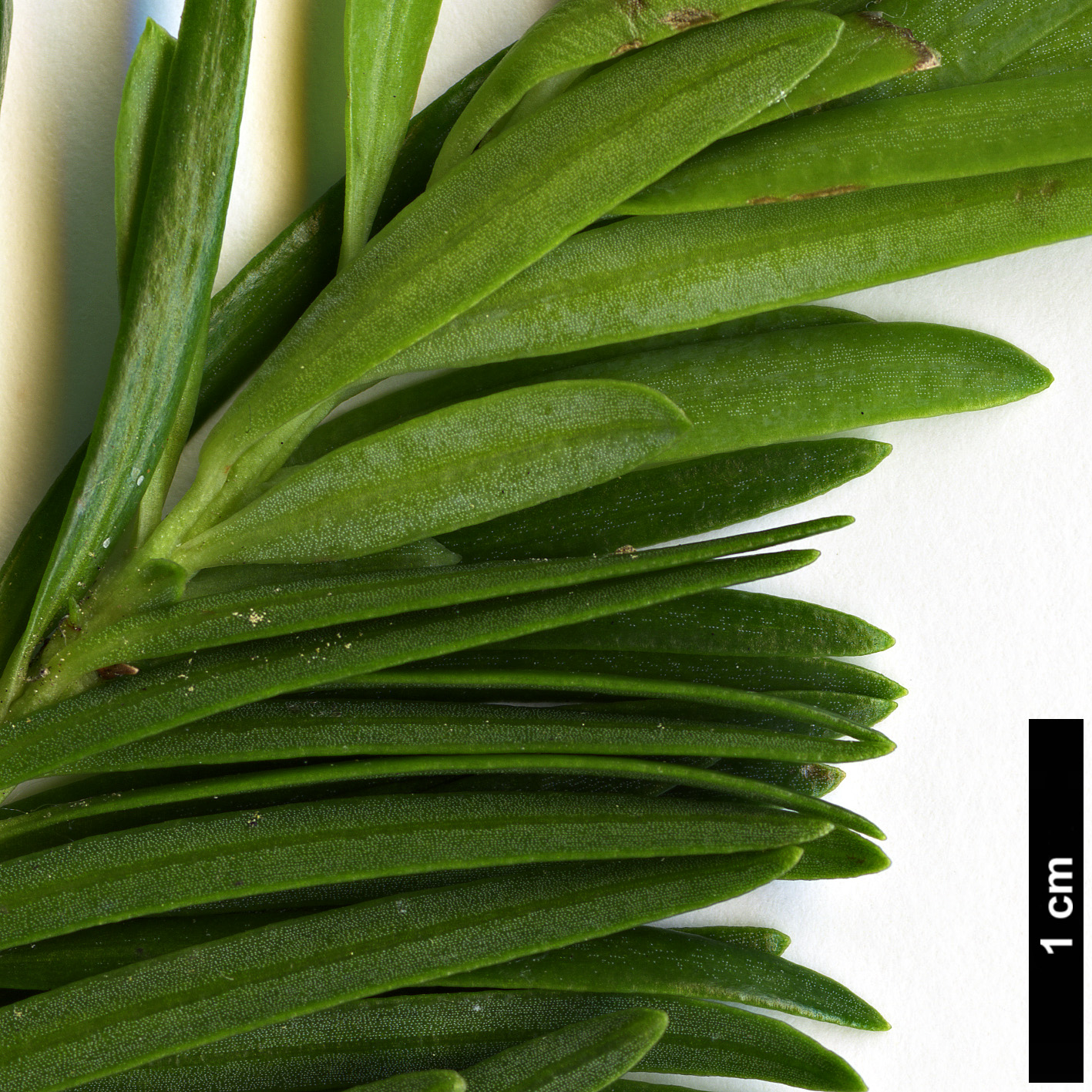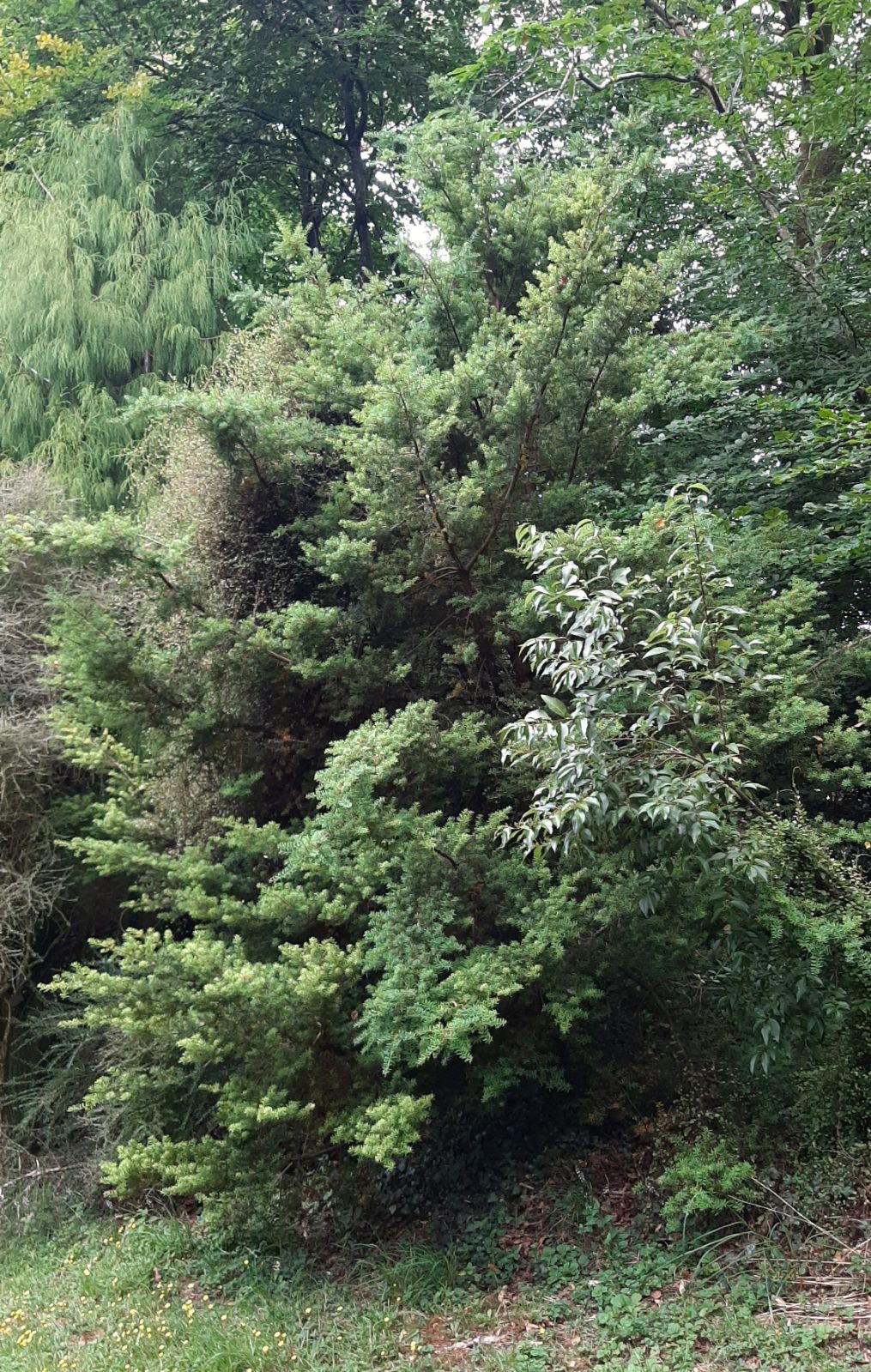Halocarpus kirkii
Credits
Article from New Trees by John Grimshaw & Ross Bayton
Recommended citation
'Halocarpus kirkii' from the website Trees and Shrubs Online (treesandshrubsonline.
Tree to 25 m, 1 m dbh. Bark greyish brown, flaking in rounded plates. Branches spreading to erect; branchlets pendulous. Juvenile leaves 1.5–4 × 0.1–0.3 cm, linear, usually acute, held at right angles to the shoot, soft in texture, persisting until the tree is at least 10 m tall and then co-occurring with adult leaves for some time. Adult leaves 0.2–0.3 cm, scale-like, obtuse, hard in texture, margins hyaline. Male strobili solitary, terminal, sessile, to 1 cm long. Female strobili in terminal clusters of three to five. Seeds 3–8 mm long, with an orange aril. Allan 1961, Salmon 1996. Distribution NEW ZEALAND: Great Barrier Is., northern part of North Is. Habitat Lowland forest to 700 m, usually with Agathis australis. USDA Hardiness Zone 9–10. Conservation status Vulnerable. Illustration Van Gelderen & van Hoey Smith 1996; NT388.
In the wild Halocarpus kirkii is a fine but little-known tree, apparently rather scarce throughout its natural range (Gymnosperm Database 2007a). Other than in New Zealand, its situation in horticulture is rather similar. The only specimen traced in cultivation in the northern hemisphere is at Tregrehan, where in 2005 it had achieved 1.5 m after 10 years, being particularly slow-growing when young (T. Hudson, pers. comm. 2005). It has a pleasant soft appearance (and feel), from the bright grass-green juvenile leaves. The species should be tried in sheltered, moist sites in warm gardens.








